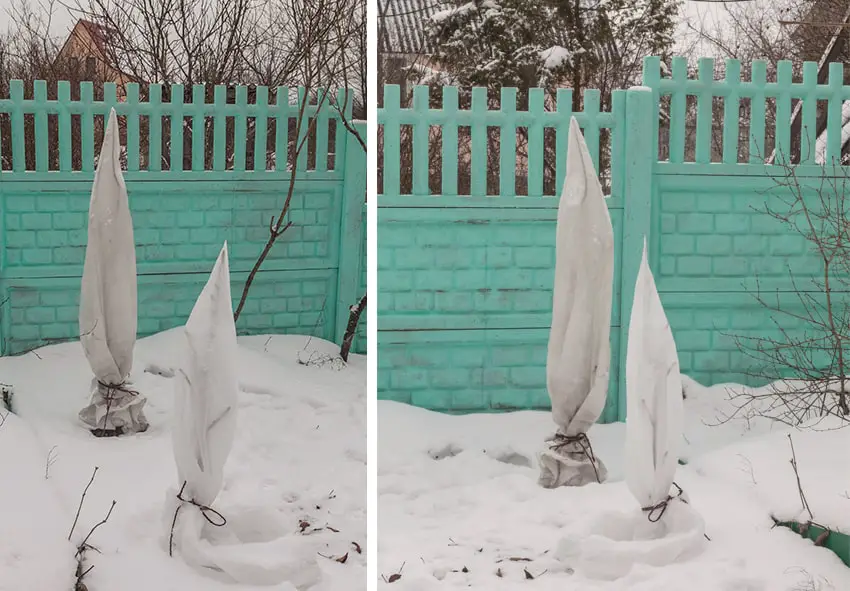Description of columnar trees
Recently, columnar trees have been very popular in horticulture. They have many advantages over trees of normal size: you can plant many trees of different varieties on a small area, ground water located close to the surface is not dangerous for “colonovids”, “colonovids” have early fruiting, harvests are sufficient for a small family and do not require industrial processing and premises for storage, they easily grow on poor soils – they are quite satisfied with a small fertile layer of earth.
Nothing needs to be cut, and you can harvest and spray without a ladder. But columnar trees are more dependent on the observance of agricultural techniques – regular watering and protection in winter.
I want to share my own experience of sheltering columnar trees in winter.

In our country, the winter period is characterized by uneven temperatures, thaws with frosts, the absence of snow at very low temperatures, strong winds, and bright sun.
All this leads to freezing and death of the buds and root system, damage to the bark and branches. In addition, a dry autumn without rain is added. The lack of rain does not allow a columnar tree with a compact root system to prepare for winter. Therefore, every visit to the dacha began with watering to saturate with water.
Top dressing of columnar trees
Feeding before the cold season is also an important part of preparing the garden for winter.
Phosphorus-potassium mineral fertilizers contribute to the strengthening of all parts of the tree and increase their winter resistance.
Fertilizers are applied to the soil strictly according to the instructions on the fertilizer wrapper, in the root circles.
Features of the temperature regime for columnar trees

The root system of ordinary garden trees can withstand temperatures up to -15-20°C, columnar seedlings have a limit that is 3-5 degrees higher.
Naturally, such temperatures practically do not occur under a layer of snow, but if the weather is frosty without snow, damage to the root system is possible.
To protect against the first frosts that occur without snow, I cover the trunk circles with a layer of fallen leaves.
In the spring, the leaves go into the compost bin.
Also, in the spring, for the fastest recovery of columnar seedlings, I add Kornevin, Heteroauxin or Zircon during watering – drugs for recovery and stimulation of the development of the root system.
Features of sheltering columnar trees for spring

To protect against rodents that gnaw the bark of trees in winter, I wrap the trunk of the tree with agrofibre. I put on a cover made of non-woven material from above to protect from wind and sunburn.
This year, due to some circumstances, the trip to the country took place later than planned. The common shelter is a tree trunk, the circles near the trunk were opened, but the cover has not been removed yet.
Thanks to the covers, the trees calmly survived the frost, blooming under shelter. In the spring, I remove the covers, put them in a big bag and send them to the barn until November.

This is how I take care of 4 columnar seedlings – plum and apple trees, which have already thanked me with harvests.

I also plan to buy pears and cherries.
You can also buy a very good tree shelter at an affordable price in the Florium online store.
Sincerely, experienced gardener, Olesya.
Read also How to save lilies before planting?
Published: 12.12.2019


